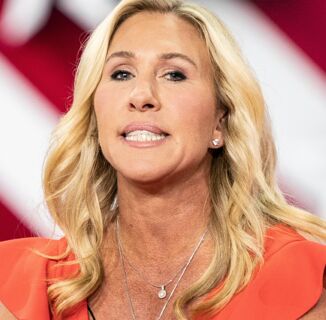On February 8, sixteen-year-old Indigenous nonbinary student Nex Benedict died following an assault by classmates. The news of Nex’s death has inspired national outrage, with advocacy groups demanding justice and an end to the war on queer kids. At the same time, calls to LGBTQ+ crisis centers have already spiked as the community grieves.
Nex was a student at Owasso High School in Oklahoma, where on February 7 they and another trans student were reportedly attacked by three older classmates in a school bathroom. Although the exact nature of the altercation has not yet been disclosed, Nex’s grandmother told The Independent they had been bullied at school over their gender identity, the attacks escalating after Oklahoma’s anti-trans bathroom bill went into effect.
The following day, Nex was taken to a hospital after collapsing at home, and they were subsequently pronounced dead. An official cause of death has not been released. Although Nex sustained head injuries, a statement by Owasso police following an autopsy has indicated that trauma was not the cause. This statement has been criticized for its vagueness since the full autopsy has not been made public, and the family are pursuing an independent investigation into the cause of death.
Join the frontline of change
Be informed, be inspired, and be part of the conversation that’s shaping a queerer world with our twice-a-week newsletter.
The circumstances of Nex’s death — particularly as bathroom bills like Oklahoma’s have been positioned as protecting children — has everyone from White House officials to local advocacy groups pointing out the harmful rhetoric that endangers queer kids. Now, several LGBTQ+ crisis centers are ringing the alarm on a surge in calls, The Advocate reports.
Between February 16 and 21, The Rainbow Project received 349 crisis contacts from Oklahoma, according to founder and executive director Lance Preston. That number includes 32 students from Owasso High School and 14 parents. In total, 69% of the calls said Nex’s death had led to their crisis, and 85% reported experiencing bullying either online or in-person.
“We’ve actually heard kids ask if their bully might beat them to death,” Preston said.
Related:
Georgia Tennant said trans rights in the coolest way
It’s called allship!
In order to help parents manage, The Rainbow Project is organizing rapid response teams in Oklahoma and virtual peer groups. “Many parents are calling the crisis and saying, ‘How do I protect my kid at school? I’m worried about my kid going to school. How do I work with my school to make sure that they’re going to protect my child?’” Preston said. “And then there are those reports of parents who are saying, ‘We have reported bullying x amount of times over the last six months, and they’ve done nothing. What if this escalates?”
The Trevor Project shared similar statistics. Nearly half of LGBTQ+ youth in Oklahoma have reported violence or threats. 48% of queer youth have reported thoughts of suicide (55% for trans and nonbinary youth).
“For many LGBTQI+ students across the country, this may feel personal and deeply painful,” White House Press Secretary Karine Jean-Pierre said in a statement. “There is always someone you can talk to if you’re going through a hard time. Dial 988 and press 3 to reach a counselor dedicated to serving LGBTQI+ young people.”
Don't forget to share:
Help make sure LGBTQ+ stories are being told...
We can't rely on mainstream media to tell our stories. That's why we don't lock our articles behind a paywall. Will you support our mission with a contribution today?
Cancel anytime · Proudly LGBTQ+ owned and operated
Read More in Impact
The Latest on INTO
Subscribe to get a twice-weekly dose of queer news, updates, and insights from the INTO team.
in Your Inbox














